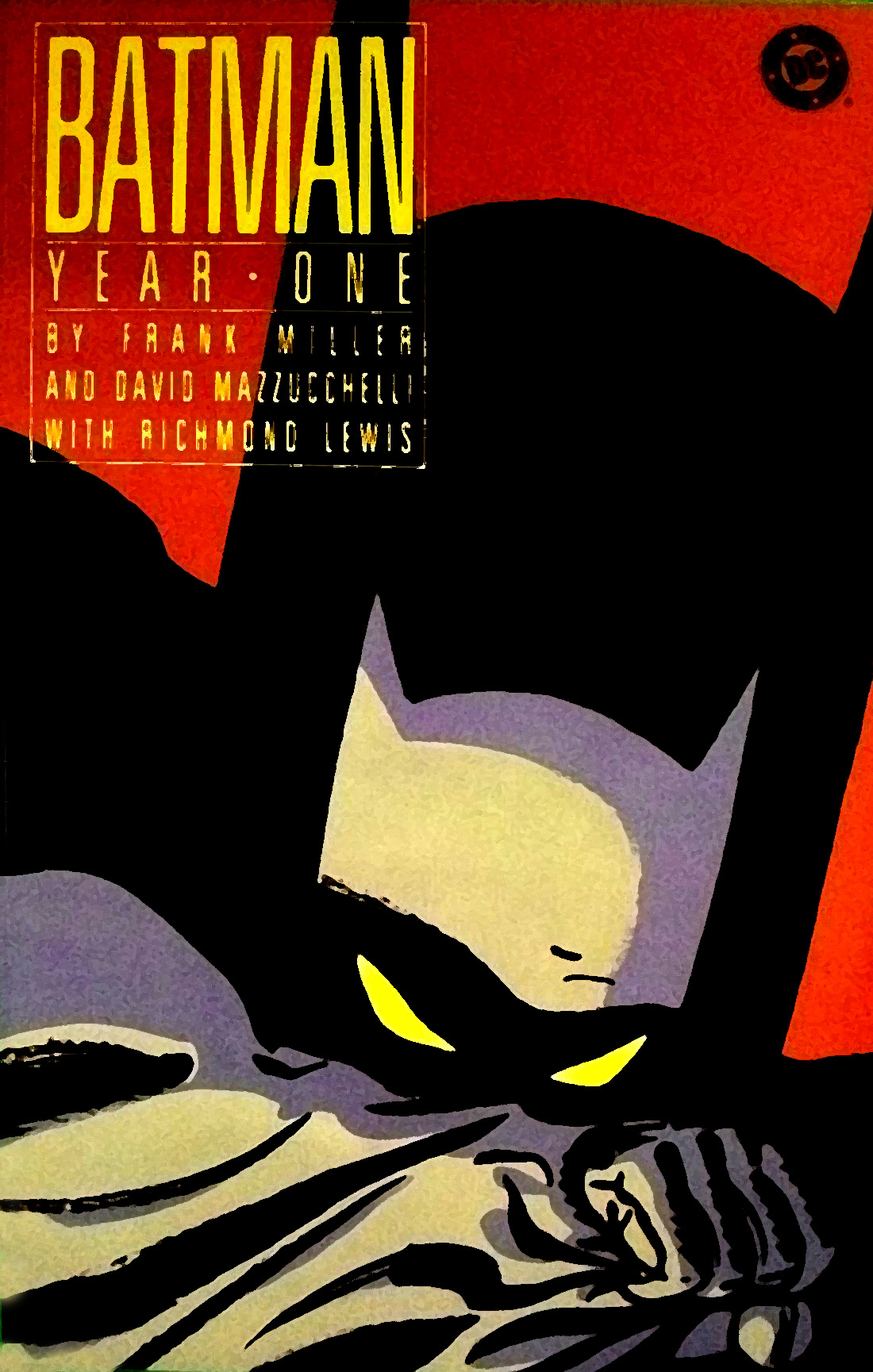I’d not read “Batman: Year One” for nearly twenty years, but got the itch to revisit it after seeing so many references to Christopher Nolan’s “Batman” films borrowing from it. I remembered it more so as an origin tale, but it turned out that the story wasn’t as sweeping as I’d recalled. One could argue that Mr. Nolan’s film had a similarly ‘gritty’ and ‘realistic’ feel to it, but only a few elements from the plot were borrowed.
Frank Miller wrote “Year One” at the height of his artistic critical acclaim, right after his historic run on “Daredevil” and almost a year after his legendary “The Dark Knight Returns.” It was an unusually strong period for critically-acclaimed comic books and Mr. Miller was at the forefront of the medium during that time period – along with Alan Moore, who was doing “Watchmen” at the same time.
DC Comics had also done their company-wide revamp “Crisis on Infinite Earths” maxi-series around that time, so one might assume that Mr. Miller was re-booting Batman with “Year One.” However, in spite of originally appearing in four issues of the main “Batman” comic book series amid that revamp, “Year One” was not considered part of the ‘official’ continuity of the character. Rather, it was apparently set in what has been referred to since as Frank Miller’s “Dark Knight Universe.” If one was to consider “The Dark Knight Returns” to be ‘the last Batman story,’ then “Year One” would be the first story within that particular continuity.
James Gordon, who would later become the stoic commissioner of Gotham City, was the true star of the mini-series. Much of the story was told from his perspective, with only a few interludes into the behind-the-scenes goings-on of Bruce Wayne. Gordon was portrayed as more conflicted and flawed than one might expect, with a major subplot involving him having an affair while going through a rocky patch in the marriage to his pregnant wife.
Anyone expecting an appearance by the Joker would be sorely disappointed. He was name-dropped on the last page, but the story was strictly about James Gordon’s first year in Gotham City and the first few months of Bruce Wayne stepping out as Batman. In the case of Wayne and Gordon, they both seemed to be fighting a mix of police corruption, drug dealers, and mafia hoodlums. The Catwoman made a few appearances, most of them for slight comedic effect, as she grew increasingly annoyed at playing second fiddle in the press to Batman.
The third issue, in which a crooked SWAT team hunts Batman amid the bombed out ruins of a large building was the highlight of the mini-series. I was so engrossed in the action that I managed to forget that Mr. Miller had planted the seeds of Batman’s escape very obviously earlier in the issue.
Some rankings of Batman stories go so far as to call “Year One” the greatest Batman story ever. I wouldn’t go that far, as I prefer “The Dark Knight Returns.” As a foundational piece though, it was very solid. The art by David Mazzucchelli was great and Mr. Miller’s story was well-crafted. The pace is shocking and there was absolutely no fat to it. In modern comics, an event like this would have been spread over at least twice as many issues, but the last influence of the story shows just how powerful an economical story can be.
Note: I read this story as part of “The Complete Frank Miller Batman” collection that Longmeadow Press put out back in 1989 through B. Dalton books. It was a fantastic collection and, while it didn’t have a sewn binding, it has held up just fine over the past twenty or so years.
The one cosmetic flaw in the book was the prominent inclusion of the 1980 story “Wanted: Santa Claus – Dead or Alive” that Frank Miller did in collaboration with writer Denny O’Neil. It would have been fine to include that short story as a supplemental material, since it was from the early part of Mr. Miller’s career and had nothing to do with his later, seminal Batman works. Hindsight made it seem ridiculous to include its name on the book’s leather spine alongside “Batman: Year One” and “The Dark Knight Returns.”
- Moonlighting (1985) – A Series Review - September 12, 2024
- San Diego Comic-Con 2024 Analysis - July 31, 2024
- “Masters of Doom” by David Kushner - December 16, 2023
